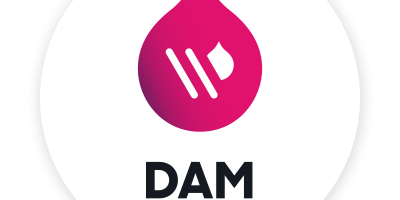
Widen by Acquia: Complete Buyer's Guide
Enterprise-focused digital asset management platform with embedded AI capabilities
Widen by Acquia positions itself as an enterprise-focused digital asset management platform with embedded AI capabilities that eliminate the complexity of API-dependent metadata automation. The platform differentiates through native integrations with Clarifai for visual recognition and ChatGPT for generative workflows, targeting marketing teams and creative organizations managing large-scale digital asset libraries[128][131][143].
Market Position & Maturity
Market Standing
Widen by Acquia occupies a strong enterprise position within the digital asset management market, with Forrester recognition as a DAM leader providing third-party validation of its capabilities, though specific ranking criteria require verification[140].
Company Maturity
The Acquia acquisition provides significant enterprise credibility and AWS infrastructure backing, positioning the platform for sustained growth in the upper-market segment.
Growth Trajectory
Growth trajectory benefits from the broader DAM market expansion and increasing enterprise AI adoption, though specific revenue or customer growth metrics require verification.
Industry Recognition
Forrester recognition as a DAM leader[140].
Strategic Partnerships
Strategic partnerships and ecosystem positioning within Acquia's broader digital experience portfolio provide stability and continued development resources.
Longevity Assessment
Long-term viability appears strong given Acquia's enterprise focus and AWS infrastructure investment, though organizations should evaluate the vendor's commitment to continued DAM innovation versus broader digital experience priorities.
Proof of Capabilities
Customer Evidence
Enterprise Customer Validation demonstrates Widen by Acquia's proven capability across diverse industries and scales. Fanatics successfully manages 3M+ digital assets using the platform, providing concrete evidence of enterprise-scale performance and reliability[138].
Quantified Outcomes
Quantified Performance Outcomes include 100x faster tagging speeds after Clarifai implementation and 60% reduction in administrative time for DAM administrators, enabling resource reallocation from routine metadata tasks to strategic content enrichment[129].
Case Study Analysis
Implementation Success Patterns show 6-10 week deployment timelines with structured phases: 1-2 weeks for data preparation, 3-4 weeks for AI model validation, and 5-6 weeks for phased asset migration[133].
Market Validation
Market Validation includes Forrester recognition as a DAM leader and successful enterprise deployments across retail, manufacturing, and e-commerce sectors[140].
Competitive Wins
Competitive Wins demonstrate advantages over API-dependent solutions through simplified implementation and embedded functionality, though specific win/loss data against competitors requires verification through direct vendor consultation.
Reference Customers
Customer evidence from Fanatics, River Island, and global manufacturers validates the platform's ability to deliver measurable efficiency gains at enterprise scale[133][138].
AI Technology
Widen by Acquia's technical foundation centers on embedded AI integrations that eliminate the API configuration complexity plaguing competitive solutions. The platform leverages Clarifai's visual recognition technology for automated metadata generation, processing visual attributes like objects, colors, and contextual elements into searchable keywords without requiring developer resources for integration[129][131].
Architecture
AWS-backed infrastructure provides enterprise-grade scalability, with documented evidence of handling 85,000+ asset migrations and supporting operations like Fanatics' 3M+ asset management without performance degradation[133][138]. The platform's architecture supports S3-based storage with migration capabilities for datasets exceeding 500GB, though video asset storage costs run 3-5x higher than image processing[133].
Primary Competitors
Primary Competitors include Adobe Experience Manager for enterprise DAM with native Creative Cloud integration, Cloudinary for API-first architecture with extensive customization capabilities, and Bynder for marketing-focused DAM with conditional metadata systems[133][143].
Competitive Advantages
Competitive Advantages center on embedded AI functionality eliminating API configuration complexity, pre-built Adobe Creative Cloud integrations crucial for creative workflows, and enterprise-grade AWS infrastructure providing proven scalability for 3M+ asset operations[131][133][138].
Market Positioning
Market Positioning occupies the enterprise DAM space with embedded AI, competing directly with Adobe and Bynder while differentiating from API-first solutions through streamlined implementation.
Win/Loss Scenarios
Win Scenarios favor Widen by Acquia when organizations prioritize embedded AI over API flexibility, require Adobe Creative Cloud integration, manage enterprise-scale marketing assets, or need multilingual metadata capabilities[131][138]. Loss Scenarios occur when organizations need extensive customization, require reverse image search, operate below enterprise scale, or prioritize cost optimization over implementation simplicity[133][137][142].
Key Features

Pros & Cons
Use Cases
Integrations
Featured In Articles
Comprehensive analysis of AI Image Metadata Tools for AI Design for AI Design professionals. Expert evaluation of features, pricing, and implementation.
How We Researched This Guide
About This Guide: This comprehensive analysis is based on extensive competitive intelligence and real-world implementation data from leading AI vendors. StayModern updates this guide quarterly to reflect market developments and vendor performance changes.
144+ verified sources per analysis including official documentation, customer reviews, analyst reports, and industry publications.
- • Vendor documentation & whitepapers
- • Customer testimonials & case studies
- • Third-party analyst assessments
- • Industry benchmarking reports
Standardized assessment framework across 8 key dimensions for objective comparison.
- • Technology capabilities & architecture
- • Market position & customer evidence
- • Implementation experience & support
- • Pricing value & competitive position
Research is refreshed every 90 days to capture market changes and new vendor capabilities.
- • New product releases & features
- • Market positioning changes
- • Customer feedback integration
- • Competitive landscape shifts
Every claim is source-linked with direct citations to original materials for verification.
- • Clickable citation links
- • Original source attribution
- • Date stamps for currency
- • Quality score validation
Analysis follows systematic research protocols with consistent evaluation frameworks.
- • Standardized assessment criteria
- • Multi-source verification process
- • Consistent evaluation methodology
- • Quality assurance protocols
Buyer-focused analysis with transparent methodology and factual accuracy commitment.
- • Objective comparative analysis
- • Transparent research methodology
- • Factual accuracy commitment
- • Continuous quality improvement
Quality Commitment: If you find any inaccuracies in our analysis on this page, please contact us at research@staymodern.ai. We're committed to maintaining the highest standards of research integrity and will investigate and correct any issues promptly.